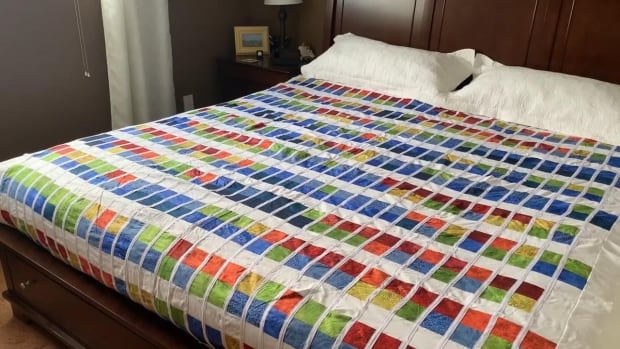
A stitch in time: University student maps Edmonton's changing climate — on a quilt
CBC
Working toward a certificate in sustainability, University of Alberta student Emilia Housch spent 60 hours working on a visual demonstration of climate change in Edmonton.
Her final product: a temperature quilt.
"I wanted to do something cool," Housch told CBC's Edmonton AM on Tuesday.
"Originally, I was going to do an infographic, and then I was like, no that's boring. Temperature quilt time!"
Temperature blankets are crocheted, quilted or knitted records of the temperature throughout a certain time period.
Housch's king-size quilt is checkered with 15 different colour patches from reds, blues to green and yellow, showing daily high and low temperatures for the month of February in Edmonton.
Rows stretching from left to right across the quilt show February in 10-year increments, from 1920 to 2020. The columns — from top to bottom — show each day of the month.
Housch used red to depict the warmest temperatures; the coldest are represented with dark blue.
The lowest temperature she recorded was –36.2 C on Feb. 23, 1940.
The highest was 11.2 C on Feb. 28, 1990.
The graph on Housch's quilt depicts extreme changes in temperatures, addressing a common misconception about how climate change only means a rise in temperatures.
"It's getting warmer, but it's also getting colder," she said.
The quilt shows rows of homogenous colours at the top that become progressively colourful by the bottom.
"The bottom is just very variable and it doesn't seem like the days are connected to each other," Housch said.





















 Run 3 Space | Play Space Running Game
Run 3 Space | Play Space Running Game Traffic Jam 3D | Online Racing Game
Traffic Jam 3D | Online Racing Game Duck Hunt | Play Old Classic Game
Duck Hunt | Play Old Classic Game











